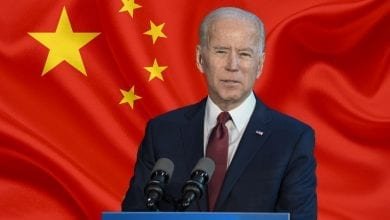‘Modern Supply-Side Economics’ Will Exacerbate Inflation
Last year, the Federal Reserve officials said they were basing their shockingly irresponsible monetary policy on Modern Monetary Theory (MMT). On Friday, Treasury Secretary Janet Yellen, said President Biden is basing his fiscal policy on “Modern Supply-Side Economics” (MSSE).
MMT proved to be wrong. MSSE is also wrong.
As I explained in a column on March 19, 2020, MMT is wrong and would lead to much higher inflation — which is exactly what happened. Similarly, MSSE is wrong and will lead to more inflation.
In the early 1960s, economists convinced policymakers that economic activity could be strongly influenced by having the government use fiscal policy to affect total demand.
Presidents from John Kennedy to Jimmy Carter followed this theory. Then, in the early 1980s, inflation hit 13% and unemployment peaked near 10%. Demand management couldn’t fix this. Increasing demand would reduce unemployment but would cause more inflation. Decreasing demand would reduce inflation, but would lead to higher unemployment.
But by formulating policy to increase supply, both problems could be solved. Increasing supply would reduce unemployment. Increasing supply would also put downward pressure on prices, thereby reducing inflation.
Congress passed, across the board, tax cuts and significantly reduced regulations. That led to a 25-year expansion from 1982 to 2007, except for small hiccups in 1991 and 2001. Inflation stayed under 3%, and the unemployment steadily fell.
Inflation Problem Very Severe
Today, we have a very severe inflation problem. For 2021, the inflation rate was 7% — which was the worst since 1982. Considering that producer prices rose nearly 10% at the end of last year, inflation looks like it will get worse. That seems to be the case considering the current inflation is being fueled by rising energy costs and rising labor costs, both of which will continue to increase.
Today we do not have a problem with growth since last year, gross domestic product (GDP) grew by about 5.5%, which is the best growth year since 1984. We don’t have an unemployment problem since the current unemployment rate is under 4%
There is, however, a severe inflation problem mostly caused by huge excess demand in the economy. The excess demand comes from the $6 trillion federal government budget deficits of the last two years. And there is huge excess demand because the Federal Reserve continues to rapidly increase the money supply and keep interest rates near zero.
Case Cannot Be Made For Massive Government Spending
The only way an economist can even try to argue that increases in government spending would reduce inflation is from a supply-side position. Yellen is saying that President Joe Biden’s Build Back Better multi-trillion spending bill will increase total supply. She means that it may tend to somewhat increase supply in the long term. In the short term, it will increase demand and is, therefore, purely inflationary.
She says by spending taxpayer money on increasing the labor supply through education programs, building better infrastructure and boosting research, the economy will grow faster and reduce inflation.
It seems that the concept is right, but the actual execution is wrong and will lead not only to higher inflation, but larger government budget deficits and extreme inefficiency.
The philosophy of supply-side economics is to increase supply by providing incentives. The incentives are given directly to all households in the form of much lower tax rates. The lower rates enable earners to keep more of what they earned.
During the Reagan and Trump administrations, for middle- and lower-income earners, the tax cut creates more demand. For higher income earners, the tax cut created new capital in order to increase investment. For business, the tax cuts increased their retained earnings, which also provided new capital for expansion. The reduced regulations cleared the way.
Allowing the Capital Markets to Lead the Way
The reason it worked so well during the Reagan and Trump administrations was that tax cuts were used. That meant the government did not make the decision regarding where the money was spent. The people, through the market, did.
During the Reagan and Trump years, tax cuts were needed to increase demand. Today, the economy does not need any increase in demand. Much of today’s inflation is caused by excess demand.
MSSE will have the government spend more money that it does not have. That will be inflationary and relatively efficient. The spending will occur not necessarily where people want it; rather, where the government thinks the people want it.
Trying to come up with new “theories” to rationalize why money is being spent toward social or climate goals rather than economic goals, will not refute solid economic logic. Modern Supply Side Economics is just a catchphrase to justify more government deficit spending.
Don’t be fooled.



